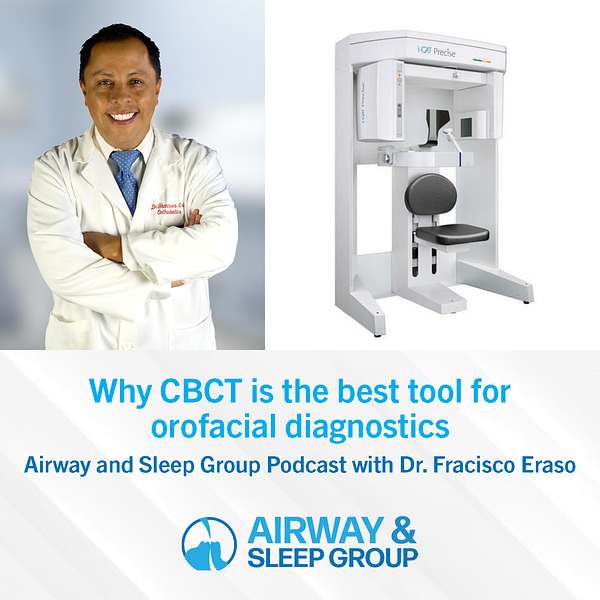
Airway and Sleep Group Podcast
Airway and Sleep Group Podcast
Why CBCT is the best tool for orofacial diagnostics
In this Airway and Sleep Group Podcast Dr. Liliana Calkins interviews Dr. Francisco Eraso. Dr. Francisco Eraso is a specialist in orthodontics and oral and maxillofacial radiology. A member of the American Association of Orthodontics, American Academy of Oral Maxillofacial Radiology and the International Association of Dental Maxillofacial Radiology. He is a practitioner in Indianapolis and one of the founders of Beam Readers Diagnostic Services.
Why do you consider CBCT an essential diagnostic tool for imaging anatomy of the craniofacial complex within dentistry or the specialty of orthodontics?
Knowing anatomy is power. If you know your anatomy you derive different solutions. Anatomy all point you in the right direction for TMJ, orthodontics and airway.
In order to be successful in orthodontics, you have to know your anatomy and the impact of anatomy on the orofacial complex.
Teeth are not only to be straightened. Orthodontist who think they can do everything with aligners are wrong. The knowledge learned about a patients basic oral anatomy is essential in creating a diagnostic plan.
A lot of people do aligners based on crowns by taking scans and a panoramic, however in the panoramic you do not see the boundaries of the mandibular bone and you pretend that you’re going to move teeth.
Sometimes you are lucky and you have some movements, however if you don’t know where the root is in the bone it is very difficult to be efficient in the movement. The knowledge of where the roots of are positioned in the mandibular bone is essential.
Why do you need 3D imaging for diagnostics?
CBCT is an essential diagnostic tool for imaging anatomy, of both of the mandibular bone and the maxillofacial complex. We are not only bone and teeth, but we are surrounded by amazing structures like the airway, TMJ and maxillary sinuses. And the only tool that can show you the 3D structure is CBCT.
You also learn about the floor of the sinus, which is within close relationship with the roots of the molars. Sometimes it is difficult to move the molars in the mesial direction or the distal direction because of the relationship of the roots with the cortical alignment on the floor of the maxillary sinus.
If you don’t have a 3-dimensional knowledge or image or interpretation where the roots are, you are going to be blind in creating your treatment plan. You are going to move teeth in the computer, the crowns are going to move fantastically in the software but in reality the treatment is going to be very inefficient.
So if you don’t take into account 3D anatomy, like with Invisalign, or any kind of aligner software, sometimes you have to do an infinite number of refinements to an orthodontic aligner treatment. Some people think that is fine, but in actuality it is orthodontists that are not doing a good job because they did not study the anatomy. That is why Using a diagnostic tool to uncover the underlying anatomy is essential in developing an effective orthodontic plan that achieves success.
What is the trend that you see in the adoption of CBCT by dental care physicians and the implementation of radiology reports?
Over the years we create habits and the habit of every dentist is to take a panoramic x-ray, bite-wings. Most offices are equip with these two diagnostic tools so that is what they use. However, these tools won’t give you anything. The only thing you can get from a panoramic is to count teeth. It won’t give you a good localization of impact teeth, or an excellent view of the temporomandibular joint, nor the maxillary sinus, or airway.
Today, we don’t have an excuse not to have a CBCT, because CBCT’s are used everywhere. Getting a CBCT is like knowing the truth. The radiologist will give the knowledge to you, you just cannot fear knowing the truth. You want to have the best tools for diagnosis.
How can you do